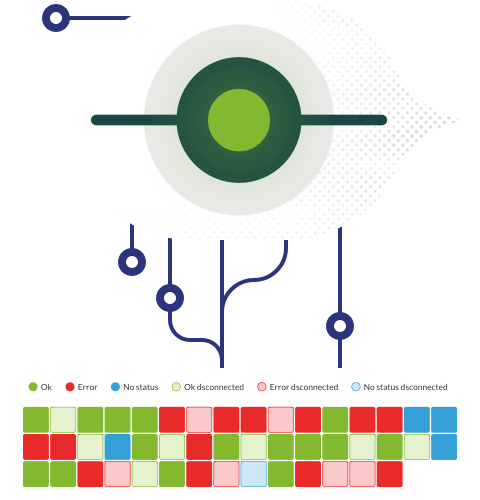It is not easy to get a group of people to combine their efforts and organize their resources to achieve a common goal. It is something that human beings have always tried to do, and it has become such an important area for companies that it has become a proper category.
This is what “Project Management” is in the company; the art of organizing the resources -both human and material- that the business has in order to achieve a specific objective. It is not an easy task, and the way of doing it has gone through several chapters throughout History.
History of Project Management
Before getting to know the History of Project Management, perhaps we should clarify the concept of project. A project is a temporary undertaking that aims to achieve a specific objective. Thus, some essential elements have to be taken into account:
- It is an activity that is different from the regular activity of the company.
- It is a specific task, with a defined beginning and end, and it will have resources, both temporal and material, as well as human resources, which are also delimited.
Chronological examples
Human beings have undertaken projects throughout their stay on planet Earth. It is something so deeply embedded in our nature that it would be impossible to determine when the first human beings agreed to manage the available resources and reached a group goal, but undoubtedly we should focus on Prehistory.
For example, think of the leader of a tribe sorting out the limited resources available (some spears and axes, perhaps) and arranging a plan of attack to hunt some especially large animal that could be used as food for weeks.
Later in time, and as the evolution of science and technology allows for greater purposes, we can find civilizations that went deeper into the management of projects to achieve achievements that still last today. Think, for example, of the majestic Egyptian pyramids.
It is precisely in the engineering environment where some of the first significant efforts in project management throughout history are located. Figures such as architects, engineers or master builders are responsible for the planning and organization of projects, in an increasingly specialized way.
Arrival of technology
Some relevant changes were already observed during the Industrial Revolution. Production is systematized and optimized to the maximum. Resources are increasing and the distinction between human and material resources is further developed.
But it wasn’t until the end of the 19th century that modern project management came into the spotlight. In a dynamic era of continuous astonishment, in which great figures in finance and technology (historical figures such as H.P. Morgan, Edison or Nikola Tesla) moved the world through immense engineering works of previously unknown complexity, it became necessary to create specific tools to facilitate the management of increasingly demanding projects.
Today, engineer Henry Gantt is considered the “father” or “forerunner” of modern project management. At the beginning of the 20th century Gantt developed the so-called “Gantt Chart” as an alternative to the “Harmonogram” proposed by Karol Adamiecki.
Gantt Diagram
The Gantt Diagram has proven to be a success on the field, being used in such relevant tasks as shipbuilding during the First World War. In fact, the Gantt Chart is still widely used today.
During the 1950s, the discipline reached new heights in its development. The concept of “Project Management” was specifically coined by General Bernard Schrieve and new models were developed for time projection, such as the CPM or “Critical Route Method” or the PERT or “Program Revision and Evaluation Technique”. At the same time, new techniques for cost projection were also developed, forming the American Association of Cost Engineers in 1956.
New achievements were made during the 1960s. In Europe, the IPMA or “International Association for Project Management” was created, in the form of a federation of several national associations. Almost in parallel, the PMI or “Project Management Institute” was created in the United States.
However, there were still things to change. With the arrival of Information Technology in the 1970s and 1980s, project management took a new leap forward.
Appearance of software
Thus, project management software emerges and more evolved and subject-specific approaches come into being, such as PRINCE2, which proposes a generic method for project management and focuses on product definition and delivery, or CCPM, which focuses on limited resource availability and priority according to critical parameters, while concepts such as “Agile Project Management” arise.
And new changes and approaches are emerging every day. In an increasingly dynamic world, project management is constantly evolving. The History of Project Management has been a long one, but it continues to produce new stories day by day.
And now that we’ve seen a very brief History of Project Management, how about discovering Pandora ITSM?
Pandora ITSM
Pandora ITSM is a program that, among other features, has a project management system that can be very interesting for you. Do you want to discover this?
Take a look here: https://pandorafms.com/en/itsm/project-management/
Or you can also ask any questions you may have about the Pandora ITSM project management tool. You can easily do this, thanks to the contact form.
In addition, remember that Pandora ITSM also has other very useful features, such as an incident management system (help desk software) based on tickets or an inventory, among others.
Do not hesitate to ask all your questions. The Pandora ITSM team will be delighted to help you!
What did you think of this article on the history of project management? We want to hear from you, so don’t forget to leave a comment below in the comments section. We will be delighted to hear from you.
And why don’t you take a look at the other articles that are published on this blog? We’re pretty sure that you will enjoy them.
Do you think the history of project management has changed a lot over the last few years? Do you think project management will change in the future? Don’t forget to answer all these questions and share this article in your social networks.
We’ll see you soon.
Pandora FMS’s editorial team is made up of a group of writers and IT professionals with one thing in common: their passion for computer system monitoring. Pandora FMS’s editorial team is made up of a group of writers and IT professionals with one thing in common: their passion for computer system monitoring.

















